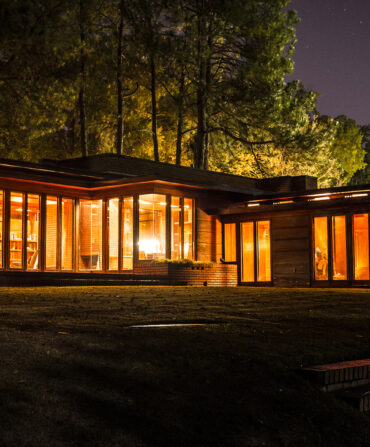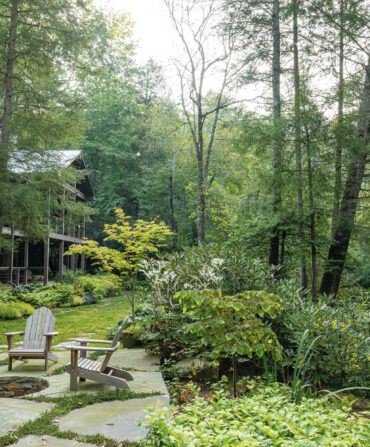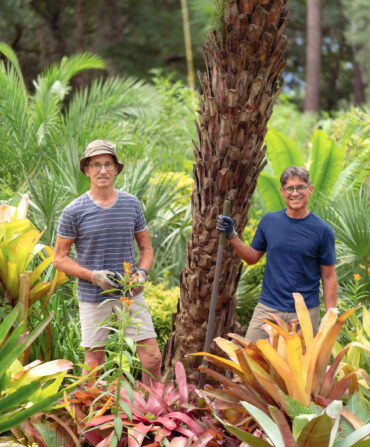“There are a lot of people out there who look at a house and think, Wow, this looks like a lot of work,” says Elizabeth Finkelstein. “And then there are the people who look at the same house and think, That looks like a lot of work—and I cannot wait.”

Photo: Courtesy of CIRCA
Elizabeth Finkelstein.
Finkelstein, founder of CIRCA Old Houses—a company that connects preservation-minded buyers with historic homes for sale—safely falls into the latter category, and there are a half-million people out there who seem to agree (or at least want to follow along). Her Instagram account @cheapoldhouses shares a steady stream of daydream-worthy fixer-uppers around the country, each boasting a low price tag and a hefty dose of history. “In so many instances, these homes are vulnerable to being flipped or destroyed,” she says. “They also kind of go under the radar. Real estate agents are not making a huge commission off of a thirty-thousand dollar house, and so generally they don’t do the extra things, like hire professional photographers.”
View this post on Instagram
Blurry photos haven’t stopped @cheapoldhouses from taking off. Its following has grown by hundreds of thousands, and with all of the grand staircases, midcentury finishes, and sweeping porches, it’s easy to understand why. “Cheap Old Houses was not something I ever really had to try to get people interested in,” says Finkelstein. She already knew there was a young market for antique homes thanks to her work with CIRCA, but the interest in these under-$100,000 listings, which often need some TLC to be livable again, was immediate and overwhelming. “It very quickly surpassed CIRCA’s own readership.” As the Instagram account reaches more and more people, the number of stories with happy endings continues to grow—as does the number of followers who have actually uprooted their lives to save a home from demolition. So we asked Finkelstein about how the account took off, what makes an old house special—especially in the South—and which #CheapOldHousesSaved still stand out.
How did you get into the business of old houses?
I grew up in an old house, so old houses are kind of in my blood. I eventually went to school and got a masters degree in historic preservation, so I was working professionally in New York City in the preservation world for a long time when my husband, who is a digital designer, and I thought about creating a website. Around that time, two things were kind of converging: My parents were selling the home that I grew up in, which was somewhat of a fixer-upper project, and we were also looking for our first house. The real estate agent thought we were completely crazy because I was interested in what most people considered totally impractical things, like how many mantles it had. [Laughs.] So we started CIRCA, a site aimed at matching people looking for a historical home with people selling them. We wanted to target buyers who didn’t need to be sold on the idea of an old house—people who, like us, already kind of got it. We also wanted to target a younger audience: At the time, there weren’t really old house websites that were targeting our generation, and it always felt like a missed opportunity. Younger people do want things with charm and character and uniqueness.
View this post on Instagram
How did CIRCA launch @cheapoldhouses?
Of all the old houses, the fixer-uppers have always been my favorite. After CIRCA got started and took off pretty easily, I started writing a monthly series on CIRCA’s blog called Ten Under 50k. The piece went viral every month, to the point that I stopped having to look so hard for these homes—people started sending them to me. Soon, I was writing Twenty-Five Under 50k, and then Fifty under 50k. Eventually, I had so many of these houses that I started to feel this personal responsibility for them. When I look at a blurry photo and I see an original mid-century bathroom, I’m like, Someone else needs to see this! So I started @cheapoldhouses as a place to throw all of these houses and put them out there. I just thought, If I can see the potential in these places, I bet there are other people who can, too.
Plenty of the homes you feature are in small Southern towns. Are there any qualities that feel distinctly Southern in these older homes?
Oh my gosh, yes. The Southern homes are so often my favorite. You see a lot of very symmetrical homes with sweeping front porches; dogtrot-style homes that have those long, open hallways; and a lot of beadboard. But the porches are the biggest thing I love about the old Southern homes. There are so many of them that were built around the turn of the century that have very whimsical Victorian porches on them, and you also have so many old, antebellum, Greek-revival houses that are really grand and amazing—and so cheap. [Laughs.]
You also feature homes that have been “saved”—first seen on the Instagram account, and then later bought by a follower. Do you have any stories about that that really stick out to you?
There’s one that comes to mind. It’s called the Little House. It was in the hands of the Georgia Trust for a long time, and it was on sale for fifteen thousand dollars in Louisville, Georgia. I was just so determined to save this house—when you see the pictures of it, you’re just gonna be like, This is absolutely amazing—so I put it on Cheap Old Houses, I wrote about it for Country Living, I was doing everything I could. Someone did eventually see it, through the feed, and bought it to restore. I had heard shortly before that happened that they were considering demolishing it, because no one would come forward to buy it, so that one was actually really saved, which was fun. But there are plenty of them: Cleveland Hall in Spartanburg, South Carolina; one they’ve been running an account on, @thehouseonavenueb, in Hico, Texas; and one in Aberdeen, North Carolina—@turningthepagemansion. There are people who have moved across the country because they saw houses on the feed, which is amazing to me.
Let’s say someone stumbles across their own “cheap old house.” What are some hidden or underrated features that could add unexpected value?
Original kitchens and original bathrooms, if you can renovate and restore them, look absolutely fabulous, and will work better with the house than any new thing you could put in. Some other classic things people look for are original staircases—so many homes, especially Victorian homes, have these really elaborate, beautiful staircases—and butler’s pantries or pocket doors are some things people really love. It really does depend on the style of house, but I would say, just universally, look for anything original. People think things like, It’s always better to replace the windows. But the original windows have settled with your house over time. Nothing will fit into place in your house the way that the original features would.
Is there anything you wish more people knew about old homes?
I wish more people understood that there’s something about nurturing an old house, bringing it back to life—and I say this as someone who grew up in one, and watched my parents work on it with their own two hands—that goes so far beyond the money you’ll make back from it. It’s wholly satisfying on so many accounts: in terms of working with your hands, in terms of self-expression, in terms of just feeling like you’ve contributed to a piece of history. I suppose the people who look at old houses and just see money pits are never going to get it, but I could just go on and on, there’s such an inherent sense of satisfaction. I think there’s such an incredible draw for that.








